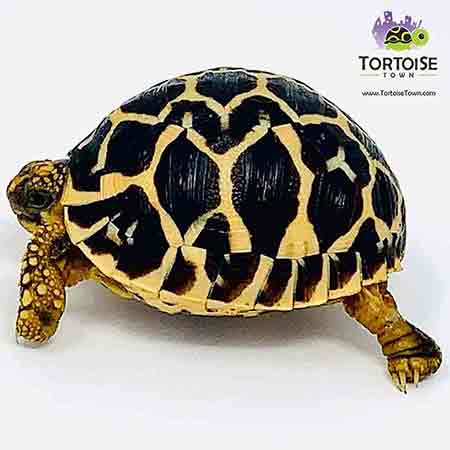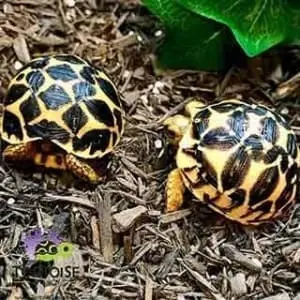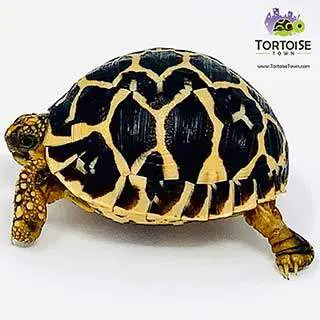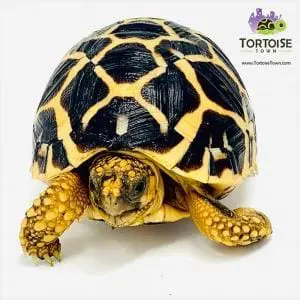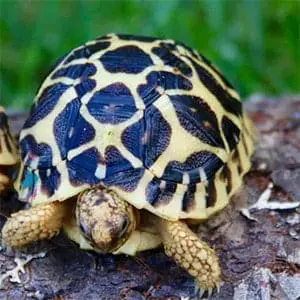Indian Star tortoise UVB Light
Tortoises need vitamin D3, which they naturally obtain from UVB light. They require it in high levels, and they require a UVB bulb. It is essential equipment, and bone and shell problems are common with tortoises that are kept without adequate UVB lighting. Normally the problems are not seen for several months, then the tortoise suddenly deteriorates and dies, or becomes permanently disabled.
The UVB lamp must be replaced every 6, 9 or 12 months depending on the brand. Keeping in mind that even if it still appears to be functioning (human eyes cannot see when the UV output drops too far). Write the date on the bulb with a permanent marker to avoid forgetting. The UVB strength should be the correct strength for forest-dwelling reptiles. Because some hide under bushes in nature, which reduces the amount of direct sunlight that they are exposed to. Medium strength UVB bulbs are usually best, sometimes labeled as “5%” or “6%”.
Arcadia and Zoo Med lights are recommended. Strip lights are far better than compact fluorescents. Because compacts only project a useful amount of UVB for a distance of about 20 cm (8 inches) from the bulb. For this reason it can be difficult to encourage the tortoise to spend enough time at this distance. (if used, they must be placed right next to the basking lamp). The strip light can project a useful amount of UVB much further, over a larger area of the enclosure.
Use a T5HO lamp, or the older style T8 lamp will suffice but need to be closer to the substrate level!
A T8 bulb is usually sufficient (with an optional reflector), mounted about 30 to 38 cm (12 to 15 inches) from the floor, normally attached to the back wall or ceiling. In taller vivariums (eg. 60 cm – 2 feet – or more) with the lighting mounted further from the tortoise, T5 bulbs are usually best. The bulb can either be about as long as the whole enclosure or about half of it. The lamp should be mounted at the hot end so that the tortoise can collect their heat and UV at the same time. (just like in nature, where both come from the sun).
Either way, the tortoise must still be able to shelter from it if needed, such as under their hide. The tortoise must not be able to climb high enough to look horizontally into the light, as it can cause eye damage. Lighting patterns should match the sun, switching on in the morning and off in the evening, eg. 8:00 AM to 8:00 PM.
Secondly, there is no reason to create a difference between summer and winter day lengths unless you are an Indian star tortoise breeder. Both daytime lights must switch off at night so that the tortoise can experience a natural sunlight cycle. (with the red basking lamp being switched on at night if one is being used). The tortoise must spend several hours per day in the enclosure to ensure that it has gathered enough UVB. (though it can cope for a few days if it is being transported, or if the lamp has failed)
Indian Star tortoise Care Guide
For more information on star tortoise care, please check out some of our free star tortoise information below. Our biologist has provided quite a bit of care related information for all new tortoise owners education.
- Star tortoise humidity
- Indian Star tortoise diet
- Star tortoise UVB Lighting
- Indian Star tortoise temperature
- Indian Star tortoise size
- Star tortoise habitat
- Indian Star tortoise substrate
- Star tortoise water
- Indian Star tortoise care
- Burmese Star tortoise care
- Star tortoise for sale

